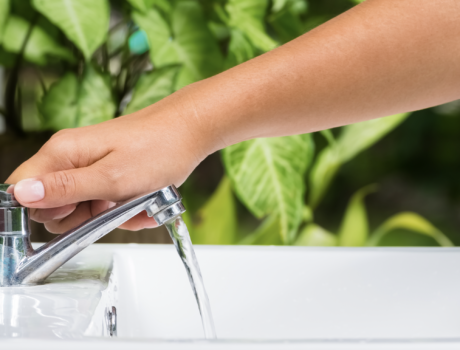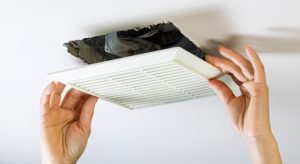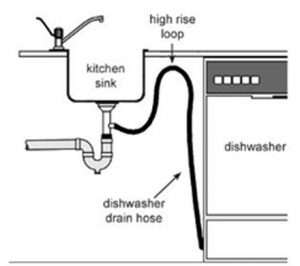Learn What Causes No Water in House?
Are you facing the frustrating problem of having no water in your house? If so, you’re not alone. Dealing with a lack of water can be a major inconvenience, disrupting your daily routine and leaving you without essential resources. In this blog post, we will explore common reasons why you might be experiencing this issue and provide practical solutions to help you get your water supply up and running again. Don’t let the absence of water disrupt your life any longer – read on to find out how to tackle this problem head-on.
What Causes No Water in House?
Losing access to water in your house can be a frustrating experience. There are several potential causes that can lead to no water in your house, each requiring a different solution. Let’s explore some common reasons why this may occur:
Main Water Supply Shut Off
One possible explanation for the absence of water in your house is a main water supply shut off. This could happen due to planned maintenance or repairs carried out by your local water utility company. In such cases, it’s essential to check if the main valve supplying water to your property has been closed accidentally or intentionally. If it’s the latter, you may need to contact your water utility provider to gain further information or request assistance.
Water Main Break
Another potential cause for no water in your house is a water main break. In some instances, the main water line that delivers water to your area may experience a rupture or damage. This can disrupt the water supply not only to your property but to the surrounding neighborhood as well. In such situations, it’s crucial to report the issue to your water utility company promptly. They will work to identify and fix the problem to restore water supply as soon as possible.
Frozen Pipes
During colder months, frozen pipes can lead to a lack of water in your house. When water freezes inside the pipes, it expands and can potentially cause them to burst or become blocked, preventing water flow. Insufficient insulation, exposure to extreme cold, or leaving faucets running at a trickle during freezing temperatures can contribute to this issue. If you suspect frozen pipes, it’s advisable to contact a professional plumber who can carefully thaw the pipes and prevent any further damage.
Plumbing Leaks
Plumbing leaks within your property can also result in a loss of water supply. Leaky pipes or faulty plumbing fixtures can lead to a significant decrease in water pressure or a complete interruption in the water flow. It’s important to visually inspect your plumbing system for any signs of leaks, such as damp spots, water stains, or the sound of running water when no faucets are in use. Hiring a plumber to identify and repair any leaks will help restore your water supply.
Water Pressure Issues
Fluctuating water pressure or consistently low water pressure can cause a lack of water in your house. Several factors can contribute to this problem, such as a malfunctioning pressure regulator, clogged pipes, or issues within the municipal water supply. A professional plumber can assess the situation and determine the exact cause of the water pressure issue, offering suitable solutions to restore adequate water flow.
Municipal Water Supply Problems
Occasionally, the issue may not be within your property but rather with the municipal water supply itself. Problems such as water source contamination, pipe bursts, or maintenance work conducted by the water utility company can impact the water supply to your area. In these cases, staying informed through local news sources or contacting your water utility provider for updates is crucial. They can provide information on the cause of the supply problem and an estimated timeline for resolution.
Well Pump Failure
For those with a private well, a malfunctioning well pump can result in no water in the house. The well pump is responsible for drawing water from the underground source and delivering it to your property. If the pump fails, it can lead to a complete loss of water. Contacting a professional well technician to inspect and repair the well pump is essential to restore your water supply.
How to Diagnose No Water in House
Check Other Faucets and Fixtures
Start by checking all the faucets and fixtures in your house. Turn on multiple taps in different rooms to see if any of them have water flowing. If you find that all the faucets are not working, it indicates a broader issue with the water supply rather than a localized problem.
Check the Water Meter
Next, head to your water meter, usually located outside your house. Check if the dial or display is moving. If it is, it means water is still being supplied to your house, and the issue might lie within your plumbing system. On the other hand, if the dial or display is not moving, it suggests a disruption in the water supply from the main source.
Inspect the Water Heater
If you have checked the faucets and the water meter without finding a solution, it’s time to inspect your water heater. Start by ensuring that the heater is receiving power and that any circuit breakers associated with it are not tripped. If the heater appears to be functioning properly, it’s time to move on to the next step.
Check for Visible Leaks
Inspect your house for any visible signs of leaks. Look for dripping faucets, water stains on walls or ceilings, or puddles of water near pipes or appliances. Even a small leak can result in a loss of water pressure throughout your house.
Contact the Water Company
If you have gone through the previous steps and still haven’t identified the problem, it’s time to contact your water company. Inform them about the issue and provide any relevant details you have gathered during your troubleshooting. They will be able to guide you further and may send a technician to investigate the problem.
Preventing No Water Issues in the Future
Regular Plumbing Maintenance
Regular plumbing maintenance is key to preventing no water issues in your home. Just like any other system, plumbing requires periodic checks and maintenance to ensure its proper functioning. Here are some essential maintenance tasks to include in your routine:
- Inspect and clean faucets and showerheads: Over time, mineral deposits can accumulate and affect water flow. Regularly cleaning these fixtures can help maintain optimal water pressure.
- Check for leaks: Leaks can lead to water wastage and potential issues with your water supply. Regularly inspect your plumbing system for any signs of leaks, such as damp spots, water stains, or dripping faucets. Promptly repair any identified leaks to prevent further damage and water loss.
- Flush your hot water heater: Sediment buildup can impair the efficiency of your hot water heater and affect the quality and quantity of hot water available. Flushing your hot water heater annually can help remove sediment and prolong its lifespan.
- Inspect and clean gutters and downspouts: Clogged gutters and downspouts can cause water backups and leakage issues. Regularly clearing them of debris helps ensure proper drainage and prevents water from seeping into your home’s foundation.
Insulate Pipes in Cold Weather
Extreme cold temperatures pose a risk to your plumbing system, as water inside the pipes can freeze and potentially lead to burst pipes. To prevent this from happening, insulating your pipes is crucial, especially in colder climates or during winter months. Consider the following steps to effectively insulate your pipes:
- Identify vulnerable pipes: Determine which pipes are most likely to freeze, such as those located in unheated areas like basements, attics, crawl spaces, or exterior walls.
- Apply pipe insulation: Use foam pipe insulation sleeves or heat tape to wrap the vulnerable pipes. This insulation layer helps to retain heat and prevent freezing.
- Seal gaps and cracks: Inspect the areas around pipes and seal any gaps or cracks with caulking or expanding foam. This helps to prevent cold air from reaching the pipes and keeps them insulated.
Monitor Water Pressure
Monitoring water pressure is an important aspect of preventing future water supply issues. High water pressure can put unnecessary strain on your plumbing system, leading to leaks, bursts, and decreased lifespan of appliances. On the other hand, low water pressure can indicate a problem within the system. Here’s how you can effectively monitor your water pressure:
- Use a pressure gauge: Attach a pressure gauge to an outdoor faucet or a designated hose bib and turn on the water. The pressure gauge will provide a reading of the water pressure in pounds per square inch (PSI).
- Check for recommended pressure range: Consult with a professional or refer to the manufacturer’s guidelines for your plumbing system and appliances to determine the optimal water pressure range.
- Adjust pressure regulator: If the pressure exceeds the recommended range, consider installing a pressure regulator or adjusting the existing one to reduce the pressure.
Install Water Leak Detection Systems
Installing a water leak detection system can help you catch leaks and potential water supply issues early on, preventing further damage and disruptions. These systems are designed to detect and alert you to the presence of water in areas where it shouldn’t be. Consider the following options for water leak detection:
- Smart leak detectors: These devices use sensors to detect water and send real-time alerts to your smartphone or home automation system. They can also shut off the water supply automatically.
- Water flow monitoring systems: These systems monitor your overall water usage and abnormal patterns, helping you identify potential leaks or issues with your water supply.
Being proactive in preventing no water issues is essential to maintaining a consistent water supply in your home. By following these preventive measures, such as regular plumbing maintenance, insulating pipes in cold weather, monitoring water pressure, and installing water leak detection systems, you can minimize the risk of unexpected water interruptions and ensure a smooth water flow throughout your household.






